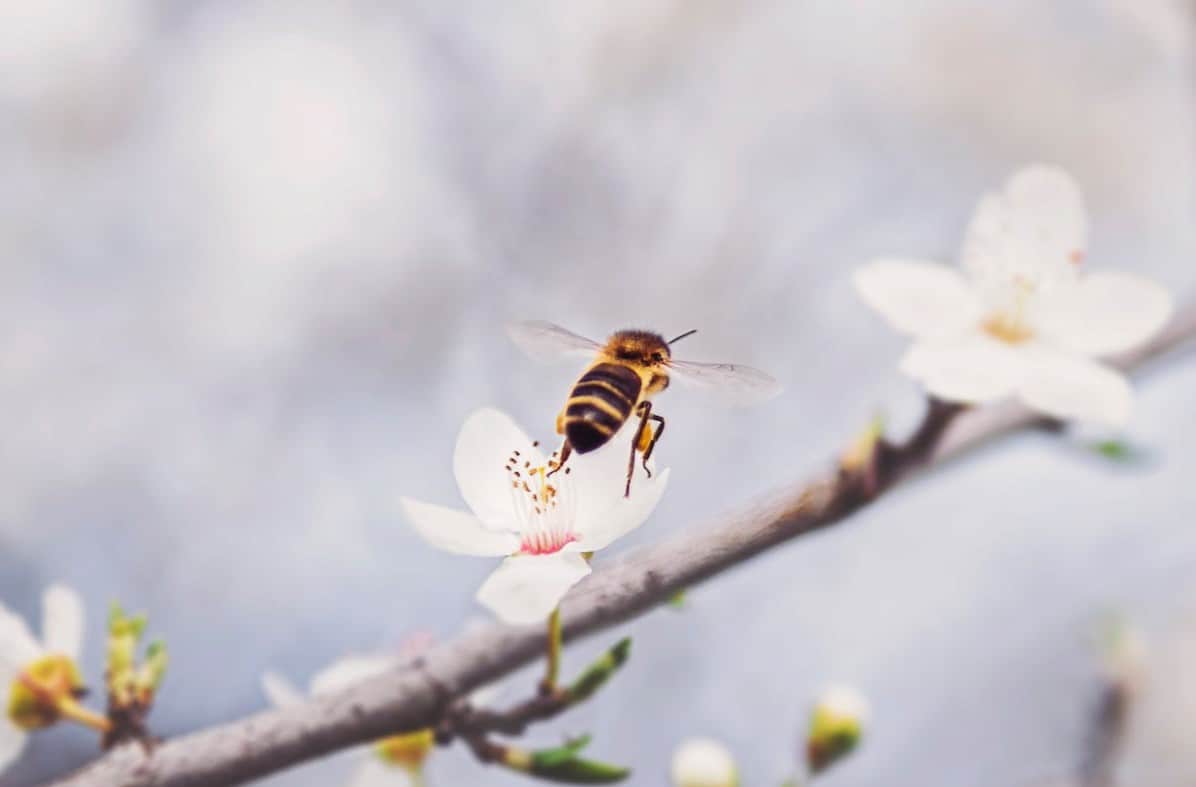Have you ever wondered how fast bees can fly as they buzz around from flower to flower? We’d bet it’s another question about bees that has crossed your mind.
In this blog post, we will learn about a part of the bee’s anatomy, the bee wings, that allows it to gather as much speed as possible when flying.
We will also delve into the varying speeds of some bee species and other flying creatures. At the same time, we will discover why speed during flight is so vital for them.
The Wings of a Bee
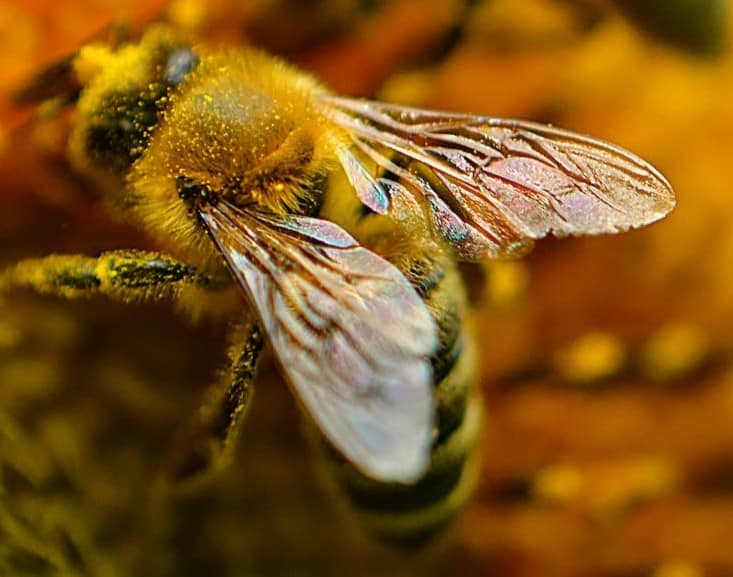
Honeybees are known for their unique wing structures and flying movements. The honey bee’s wings are remarkable structures designed for efficient and agile flight.
The vein structure of the wings provides structural support that enhances their strength. This makes the wings more durable but easier to control during a bee’s flight.
How many wings does a bee have?
Bees belong to the order Hymenoptera. It is a common feature among flying insects in the order Hymenoptera to have two pairs of wings or four wings in total.
While most people perceive bees to have two wings only, they actually have 4 wings. These wings are paired together.
The larger wings are the forewings, located on the top, while the smaller wings are the hindwings, located underneath the former. Characteristically, the hindwings are connected to the forewings by hooklets from the bee’s exoskeleton.
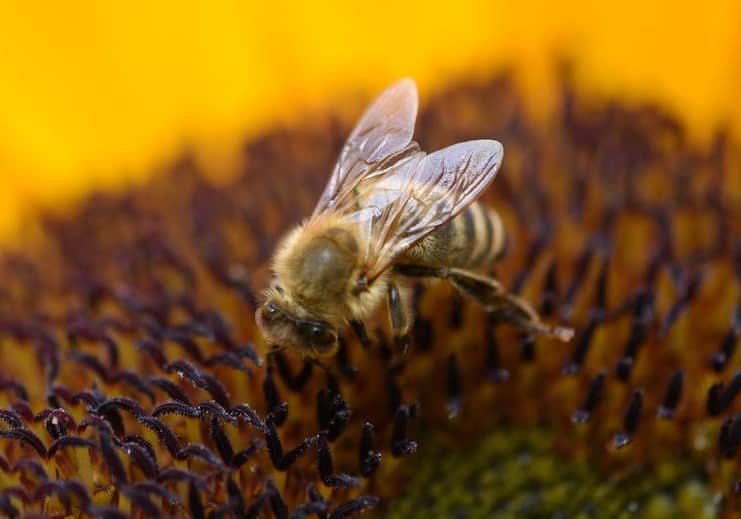
How do Bees Fly?
At the base of the wings are unique hinge-like mechanisms that allow bees to move their wings with greater flexibility. It allows the bees to adapt to various flying maneuvers.
The wing structure allows bees to achieve a high wingbeat frequency. Generally, an adult healthy bee can beat its wings from 200-300 beats per second.
In contrast, other small flying insects can flap their wings for up to 200 beats per second. With such lesser capability, they are unlike bees that can carry large loads with ease when flying.
Additionally, unlike other flying animals that flap their wings up and down to take flight, bees use a figure-eight wingbeat pattern. This movement creates a vortex in the air that would add more strength and better maneuverability during their flight, even with some loads on their bodies.
Bees also possess strong thorax muscles. The muscles connected to the wings enable the rapid and coordinated movement of the wings during flight, enabling bees to rotate their wings while flying. The ability to twist their wings enables bees to quickly change direction when necessary.
Speeds of Common Flying Insects
How Fast Can Bees Fly?
Various bee species have adapted their flying speeds to suit their roles within the colony and environment. Honeybees, bumblebees, and Africanized honey bees have different rates of speed to distinct patterns while flying.
The varying velocities of these different species ensure that they can flourish even under difficult circumstances.
Honey Bees
Honey bees have an impressive average flight speed of 15 mph.
If they sense danger, honey bees fly up to a maximum speed of 20 miles per hour to avoid the threat. This enables them not only to evade predators effectively.
At the same time, this ability allows a honey bee to collect resources such as nectar and pollen to produce honey in their hives during winter months.
Can a honey bee fly for long? A honey bee flies with strength and endurance. It has the ability to fly distances up to six miles.
This allows a honey bee to make rounds between diverse types of flowers and quickly lift and carry food back to the hives to sustain the queen bee and other members of the hive.
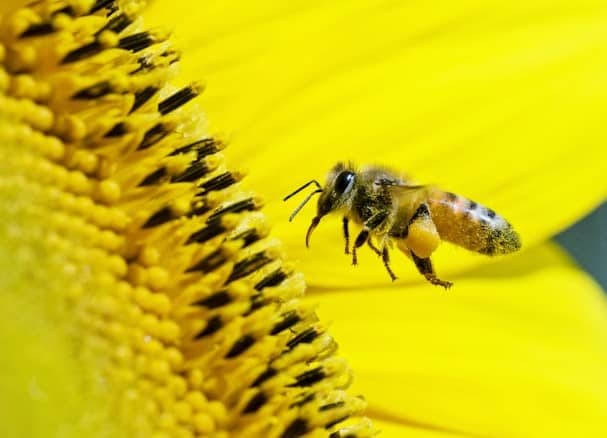
Africanized Honey Bees
Africanized honey bees, a combination of African and European bee varieties, display almost similar speeds to other honey bee strains.
Moving between 7-16 miles per hour, they are fast flyers. They rely heavily on their swiftness in defending colonies from potential aggressors and are capable of flying away if danger arises too close.
Bumble Bees
Bumblebees possess the ability to fly at an average speed of 22 miles per hour, which is incredibly fast. This gives them the power to cover vast distances while collecting nectar and pollen for their own sustenance.
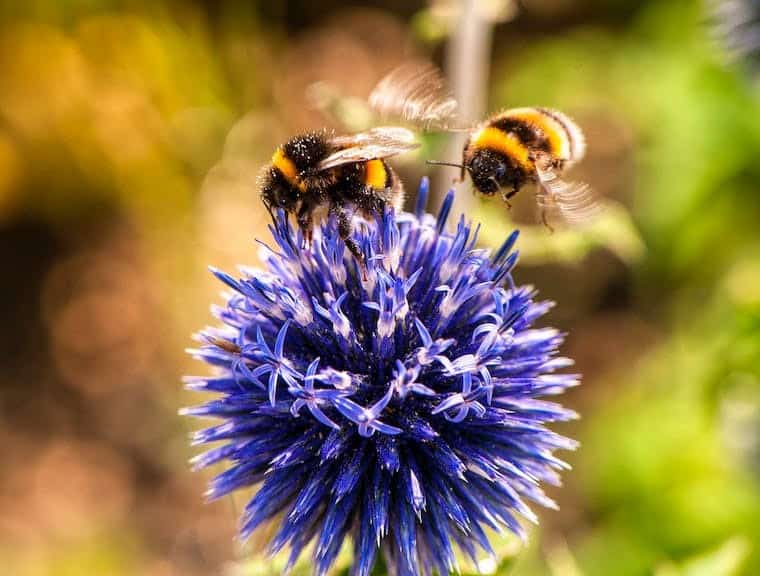
While doing so, they also quickly pollinate various species of plants by quickly moving from flower to flower.
By beating their two wings vigorously, they are capable of transporting vital resources that would promote pollination. In turn, they contribute to maintaining a healthy ecosystem.
Carpenter Bees
Carpenter bee flies with an average speed of 12-15 miles per hour or about 33 kilometres per hour.
Male carpenter bees fly faster than females, and they are often seen flying around homes and fields in search of mates.
Queen carpenter bees fly slower as they mostly do so only when they are looking for a suitable place to build their nests.
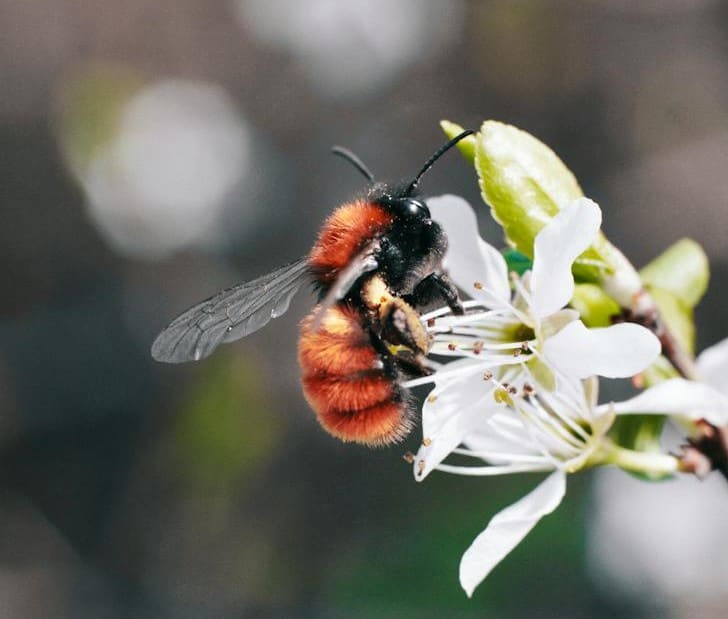
How Fast Can Other Insects Fly
Bees are not the only species capable of remarkable feats of flight. Yellowjackets, wasps, and hornets can also reach impressive speeds.
Wasps, Hornets, and Yellowjackets
Wasps move between 6 to 12 mph in the air, while yellowjackets keep up a steady pace at 6-7mph.
Among the three, the one with the fastest speed is the Hornet. Hornets can fly up to 15 miles per hour. However, there have been some sightings of these wasps flying at a top speed of 25 miles per hour.
Their speed in navigating the aerial environment allows them to effectively pollinate flowers. In doing so, they contribute to crop productivity and the promotion of a healthier ecosystem.

Factors Affecting Bee Speed When Flying
Bees have to adapt their wing movements and angles when facing outside elements such as wind, rain, or altitude in order for them to keep up with efficient flight speeds.
Even light rain can affect the flying speed of bees by making their wings wetter than usual. The water on the wings can add a little burden and weight on the bees that could slow them down when flying. Not to mention the additional weight of pollen and nectar during a collection trip.
The temperature also has an impact on bee performance. Too cold temperatures will result in lower activity from their flight muscles, while higher body temperatures can improve quicker movement capability during flights.
Ideal conditions exist between 25 and 27°C since it is within this range that these insects reach peak performances regarding matters related to speed while airborne.
Bees’ flight time can be impacted by various environmental factors, such as wind strength, rainfall amount, and altitude and temperature levels, making it possible that the journey might take either more or less time than expected.
The Importance of Bee Speed for Survival
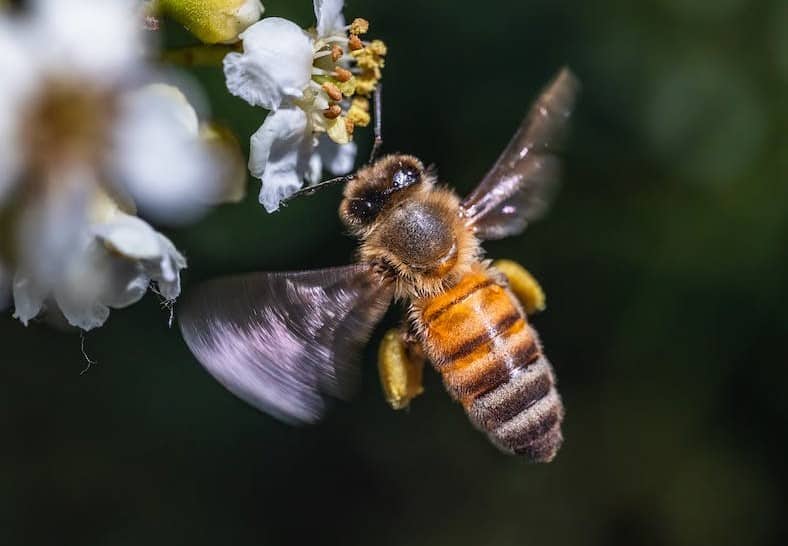
Bees require a fast speed of flight in order to survive and thrive. It allows them to locate nectar-rich flowers, collect the pollen they need for their hive, and flee from predators.
Speed also helps bees with tasks that are essential within their colonies – such as collecting resources, feeding larvae, and managing activity inside the hive. Thus, bee velocity is an integral part of ensuring continuity for these remarkable insects.
Being able to fly quickly gives bees access to food supplies, which enables them to sustain themselves on one hand while allowing evasion against potential dangers like crab spiders or mantids on the other hand!
Without rapid movement capabilities enabled by swift flying behavior, honeybees would not be nearly as successful at gathering critical sustenance nor avoiding risks posed by wildlife adversaries, thus making it crucial to understand how crucial this phenomenon is when aiming to protect all types of winged bugs.
Final Thoughts
It is now clear that bees have learned to adapt in order to survive. Even their flying speed is aligned with their task of gathering as many resources for their hives and with their role as efficient pollinators.
As a means of survival, the fast bee flight speed has enabled them to move away from potential threats and danger.
By understanding and appreciating the amazing world of bee speed, we can better protect and preserve these essential pollinators for generations to come.
